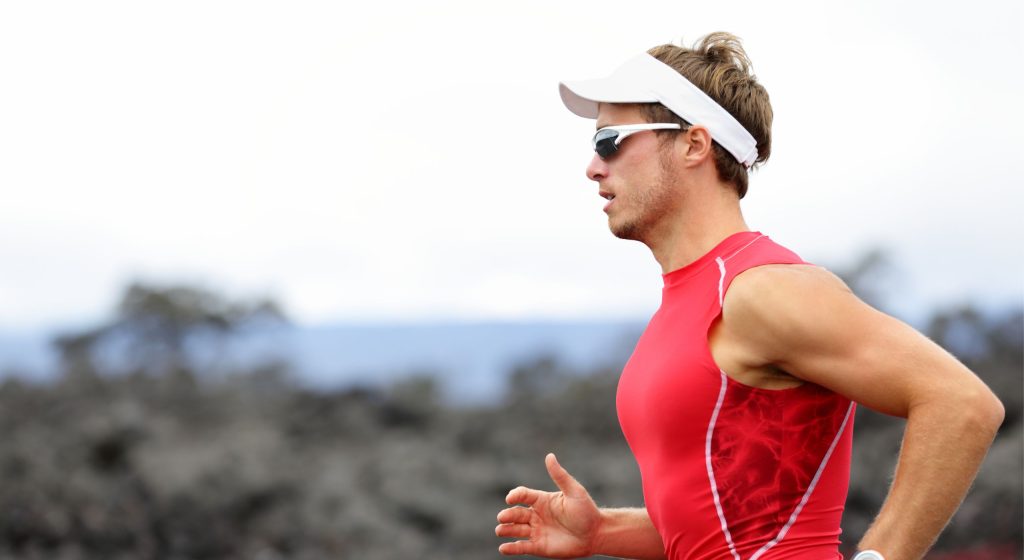Triathlon how to train
When to start:
Generally, if your goal is to complete your first short-distance triathlon, plan for at least 12 weeks of training before your event. If you are in good health, physically fit, and familiar with swimming, cycling, and running, then an 8-week training plan might be sufficient. If you are starting from scratch, you may need to give yourself 16 weeks to train.
Therefore, you can choose a suitable start time based on your circumstances. Considering that the training period takes some time, it is recommended to plan ahead and begin your training program. This will give you enough time to gradually adapt and improve your fitness level to be in peak condition for the race.
How to create a training schedule:
Creating a training schedule for triathlon requires considering the following factors:
1. Available time per week: Determine how much time you can allocate each week for training. Based on your work, family, and other commitments, figure out the weekly training slots you can accommodate.
2. Training frequency for each discipline: Determine the training frequency for each discipline (swimming, cycling, and running). Generally, each discipline should be trained at least twice a week to ensure comprehensive development and adaptation.
3. Long brick workouts: Plan a day in the week for long brick workouts, which are back-to-back cycling and running workouts (or swimming/cycling workouts). Long brick workouts help you adapt to consecutive movements in the race.
4. Rest and recovery: Schedule at least one to two rest days per week to allow your body to recover and repair. Rest is crucial for training effectiveness and avoiding overtraining.
Based on the above considerations, you can create a weekly training schedule. Here’s an example:
Assuming you have no experience in swimming, cycling, or running, it is recommended to start with the following training volumes:
Swimming: Twice a week. “Start with very short portions in the pool, like 10-20 x 25 yards, and progress to 50s and 100s over four to six weeks.”
Cycling: Once or twice a week. “Most people can ride continuously for 20 to 30 minutes, so start from there and progress to an hour over four to six weeks.”
Running: Once or twice a week. “Brand new runners should start with a run/walk plan, like 5x (jog 3 minutes/walk 2 minutes).”
Each training day can be scheduled according to your available time, such as morning, afternoon, or evening. Within each discipline’s training, you can set distances and intensities based on your ability and goals. Gradually increase the distance and intensity of the training, but do not exceed a 10% increase per week.
Ensure to incorporate strength training after the main endurance workouts to strengthen key muscle groups and improve stability.
Most importantly, make personalized adjustments based on your needs and limitations. If you have specific requirements or time constraints, you can modify the schedule accordingly. Remember, this is just an example schedule, and you can customize it to fit your own situation. It’s best to seek advice from a professional coach or healthcare professional before starting a training plan.
Training Objectives:
Swimming training: Enhance strength in the back, shoulders, and arms, and improve flexibility in the torso.
Cycling training: Increase strength in the quadriceps, glutes, and leg muscles, and create stability in the torso and chest.

Running training: Strengthen leg muscles, improve flexibility in the hips, and enhance stability in the torso and shoulders.
About Rest:
Rest is crucial in triathlon training as it allows the body to recover and adapt to the stresses of training. Here are some important considerations regarding rest:
1. Weekly rest days: Schedule at least one to two full rest days per week. These rest days help the body recover and prevent overtraining.
2. Rest after brick workouts: Allow sufficient rest time for the body to recover and repair after long brick workouts (back-to-back cycling and running workouts). This can be a complete rest day or a light activity day, such as an easy walk or stretching.
3. Monitor body signals: Pay attention to signals from your body such as pain, fatigue, discomfort, or signs of overtraining. If you feel excessively fatigued or experience pain, give yourself more rest time and consult a doctor or professional coach if necessary.
4. Quality sleep: Ensure you get enough high-quality sleep every night to support the body’s recovery and repair. Sleep needs may vary individually, but it is generally recommended for adults to aim for 7 to 9 hours of sleep per night.
5. Nutritional and hydration intake: Provide the body with appropriate nutrition and hydration to support recovery and muscle rebuilding. During training, make sure to consume sufficient protein, carbohydrates, and healthy fats, and maintain good hydration.
6. Recovery activities: Engage in recovery activities on rest days or light activity days, such as easy walks, yoga, stretching exercises, or massages, to promote blood circulation, alleviate muscle tension, and facilitate body recovery.
Please note that the specific arrangement of rest time should be adjusted based on individual physical condition, training intensity, and goals. It’s best to consult a professional coach or healthcare professional before creating your training plan to ensure that your rest schedule aligns with your personal needs and objectives.

Triathlon how to eat
Breakfast
Breakfast is essential for providing energy to the body and starting the day’s activities. Here are some breakfast suggestions:
1. Scrambled Eggs on Whole Wheat Toast: Place two scrambled eggs on two slices of whole wheat toast. This provides a combination of carbohydrates, protein, and healthy fats. The total calorie count is approximately 369 calories.
2. Fresh Fruit Porridge: Add 50 grams of porridge and fresh fruits to semi-skimmed milk. This provides carbohydrates, protein, and some fat. You can add honey and yogurt for taste if desired. The total calorie count is approximately 450 calories.
3. Whole Wheat Cereal Bars with Mixed Seeds: Have three pieces of whole wheat cereal bars and sprinkle them with mixed seeds. This option provides carbohydrates, protein, and fat. The total calorie count is approximately 347 calories.
4. Tomato and Cheese Omelette: Have two tomatoes and a cheese omelette. This is a high-protein, low-carbohydrate option that provides protein and fat. The total calorie count is approximately 273 calories.
5. Boiled Egg on Whole Wheat Toast: Place two boiled eggs on two slices of whole wheat toast. This provides a combination of carbohydrates, protein, and healthy fats. The total calorie count is approximately 432 calories.
You can adjust these breakfast choices according to your taste and nutritional needs. Ensure that your breakfast includes a balanced mix of carbohydrates, protein, and healthy fats. Additionally, staying adequately hydrated is important.
Lunch
Lunch is an important meal of the day that provides energy and nutrients. Here are some lunch suggestions:
1. Chicken Salad Wrap with Whole Wheat: Make a chicken salad wrap using 100 grams of chicken in a whole wheat wrap. This is a protein and carbohydrate-rich option that provides balanced nutrition. The total calorie count is approximately 391 calories.
2. Tuna Salad and Whole Wheat Pita Bread: Make a tuna salad using 150 grams of tuna chunks and a whole wheat pita bread. This provides a combination of protein, carbohydrates, and healthy fats. The total calorie count is approximately 448 calories.
3. Three Bean and Red Pepper Soup: Enjoy a bowl of soup with three beans and red peppers. This is a high-fiber, high-protein option that can be complemented with other vegetables. The total calorie count is approximately 347 calories.
4. Goat Cheese and Feta Salad with Balsamic Vinegar: Enjoy a serving of goat cheese and feta salad with some balsamic vinegar as dressing. This provides protein and healthy fats, with lower carbohydrates. The total calorie count is approximately 229 calories.
5. Chicken and Mixed Salad in Whole Wheat Pita: Make a chicken and mixed salad using two whole wheat pita bread and 100 grams of chicken. This is a carbohydrate and protein-rich option. The total calorie count is approximately 410 calories.
Choose a suitable lunch based on your taste and nutritional needs. Ensure that your lunch includes protein, carbohydrates, healthy fats, and an adequate amount of vegetables and fruits. When preparing your lunch, opt for fresh and natural ingredients, and avoid excessive processed foods.
Dinner
Dinner is crucial for athletes as it provides an opportunity to replenish energy and nutrients. Here are some dinner suggestions:
1. Sirloin Steak with Mushrooms and Sweet Potato: Enjoy 200 grams of sirloin steak with 140 grams of sweet potato. This is a high-protein, high-carbohydrate option that also provides a moderate amount of fat. The total calorie count is approximately 448 calories.
2. Mediterranean Vegetable Seasoned Chicken: Enjoy 140 grams of chicken, 200 grams of vegetables, and 50 grams of steamed bulgur wheat. This is
a protein and carbohydrate-rich option that offers rich nutrients. The total calorie count is approximately 474 calories.
3. Chicken and Shrimp Seafood Rice: Enjoy a serving of chicken and shrimp seafood rice with 400 grams of rice. This is a high-carbohydrate, moderate-protein option that provides ample energy. The total calorie count is approximately 453 calories.
4. Chicken and Peanut Stir-Fry: Make a stir-fry using 100 grams of chicken, 160 grams of mixed vegetables, 100 grams of egg noodles, and 60 grams of peanut sauce. This is a protein and carbohydrate-rich option. The total calorie count is approximately 486 calories.

5. Salmon Fillet with Mixed Vegetables and Potatoes: Enjoy 100 grams of salmon, 160 grams of mixed vegetables, and 200 grams of new potatoes. This is a protein and carbohydrate-rich option that also provides healthy fats. The total calorie count is approximately 452 calories.
Choose a dinner option that suits your taste and nutritional needs. Ensure that your dinner includes protein, carbohydrates, healthy fats, and plenty of vegetables. Opt for fresh and natural ingredients as much as possible, and limit the consumption of processed foods.
Snacks
Snacks are important for athletes as a source of energy. Here are some snack suggestions:
1. Mixed Nuts, Raisins, and Dried Cranberries: Enjoy a handful of 40 grams of mixed nuts, raisins, and dried cranberries. This is an option rich in carbohydrates and healthy fats, while also providing some protein. The total calorie count is approximately 209 calories.
2. Cheese on Crackers: Enjoy 120 grams of cheese with crackers. This is an option rich in protein and carbohydrates, while also providing some fat. The total calorie count is approximately 162 calories.
3. Low-Fat Peanut Butter on Two Whole Grain Rice Cakes, with a Banana: Enjoy 30 grams of low-fat peanut butter spread on two whole grain rice cakes, accompanied by a banana. This is an option rich in carbohydrates, fat, and some protein. The total calorie count is approximately 366 calories.
4. Orange: Enjoy one orange. Oranges are rich in carbohydrates and also provide some vitamins and fiber. The total calorie count is approximately 62 calories.
5. Apple: Enjoy one apple. Apples are a low-calorie option that are rich in carbohydrates and fiber. The total calorie count is approximately 95 calories.
6. Grapefruit: Enjoy 100 grams of grapefruit. Grapefruit is a low-calorie option that is rich in carbohydrates and vitamin C. The total calorie count is approximately 32 calories.
7. Pear: Enjoy one pear. Pears are a low-calorie option that are rich in carbohydrates and fiber. The total calorie count is approximately 96 calories.
Competition
To fuel yourself for your first competition, here are some suggestions for pre-, during, and post-competition:
24 hours before the competition:
– Breakfast: Choose a breakfast with a higher carbohydrate content, such as pancakes, French toast, granola cereal, with some scrambled eggs or yogurt and fruit.
20 hours before the competition:
– Lunch: Choose a light, low-fiber, and low-fat lunch, such as wraps, sandwiches, or soup.
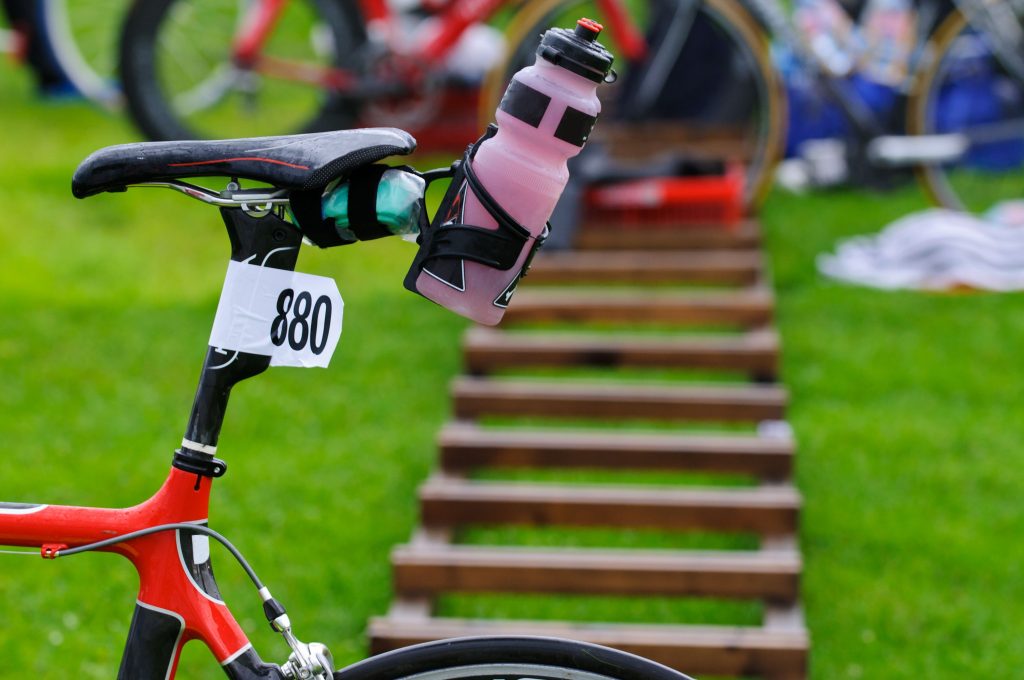
15 hours before the competition:
– Dinner: Choose a simple dinner, such as a baked potato, rice, with a piece of fish or chicken, or some boiled eggs or tofu, accompanied by a very simple lettuce and tomato salad (avoid high-fiber vegetables).
2.5-3 hours before the competition:
– Pre-competition snack: Choose a breakfast that you have already tried during training, ensuring it contains a balance of carbohydrates, protein, fat, and fruit. Consume around 300-400 calories, depending on your individual body size. You can choose low-residue carbohydrates (e.g., rice cakes, soda crackers, pita bread, crepes) or more dense carbohydrates (e.g., waffles, bagels, oatmeal) and add some honey, peanut butter, banana, and/or some dates.
Cycling:
– The goal is to consume 20-24 ounces of fluids and at least 150 calories per hour, all coming from sports drinks. Depending on the length of the race, prepare an appropriate amount of sports drink to consume every 15-20 minutes.
Running during:
– For a short triathlon (5K run), you can hydrate with water at the aid stations and don’t need to carry anything with you, but if you’re concerned about low blood sugar, you can carry energy gels. For an Olympic-distance run (10K), you can prepare a handheld bottle with gels and dilute the gel with water as needed, gradually fueling yourself based on your pace.
After the competition:
– Assess based on how you feel. If dehydrated, consume electrolytes, fruits, and fluids to rehydrate. If you fell during the race, you can have some cola or sugary drink to raise blood sugar levels. If feeling good, eat a regular meal and choose some healthy foods to replenish yourself with nutrients.
Triathlon what do you need
Swimming Equipment
For swimming equipment, here are some suggestions and explanations:
Goggles: Choose goggles that fit your face shape and provide comfort. Try different brands and styles to ensure a good seal, no leakage, and clear vision.
Swimsuit: Choose a swimsuit that suits your personal preference and meets the requirements of the competition. Swim trunks, bikinis, briefs (for men), swim briefs, tri suits, or one-piece triathlon suits are all options. Make sure to choose something that is comfortable and functional for both swimming and running.
Swim Cap: Many competitions require wearing a swim cap, which helps identify participants. Choose an appropriate swim cap based on the requirements of the competition. If the water temperature is low, you may consider wearing a neoprene cap for insulation.
Wetsuit: Choose an appropriate wetsuit based on the competition regulations and water temperature. Wetsuits come in various types, including two-piece, full-sleeve, sleeveless, and sleeveless short legs. Understand the regulations of the competition organization regarding wetsuits and choose the appropriate style based on water temperature and personal preference.
Competition Rules: When participating in organized competitions, familiarize yourself with the rules, including when wetsuits are allowed and what types are permitted. Different organizations and races may have different regulations, and adhering to the rules is an important part of participating in the competition.
Please note that these are suggestions, and specific equipment choices may vary based on personal preferences, competition rules, water temperature, and other factors. When selecting equipment, you can consult with professional swimming coaches or experienced triathletes for more specific advice.
Cycling Gear
Jersey: For most races, a jersey is required and specified in the rules. You can choose a specialized cycling jersey for triathlon or a standard cycling jersey that is suitable for triathlon. Breathable, moisture-wicking, and form-fitting jerseys can provide better comfort and performance. You can adjust the zipper and roll up the sleeves of the jersey for ventilation based on the weather.
Shoes: You can choose to wear regular athletic running shoes for cycling, which allows you to use standard flat pedals. However, if you want to improve efficiency and save time, consider purchasing specialized cycling shoes and matching pedals. Cycling shoes have a stiff sole and interface with the pedals, allowing your pedaling power to be transferred more effectively to the bike, enhancing cycling efficiency.
Gloves: Whether to wear gloves is a matter of personal preference. During long rides, gloves can provide extra comfort, reduce hand fatigue, and absorb vibrations. You can choose to wear gloves based on your preferences and habits.
Sunglasses: Wearing sunglasses can protect your eyes from the sun’s glare, dust, and objects such as insects. Choose sunglasses that fit you well and ensure they have good UV protection.
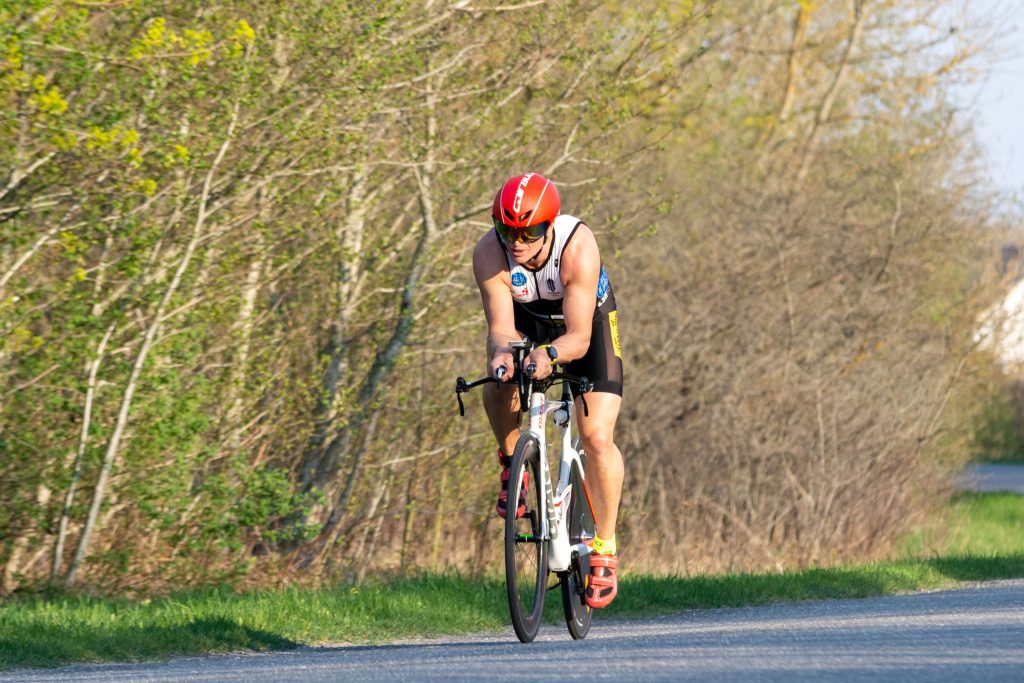
Race Belt: A race belt is a convenient way to secure your race number bib. It is usually an elastic belt with clips to hold the bib in place. This way, during the T1 transition, you only need to put on the belt without worrying about the placement of the bib.
When selecting clothing and accessories, make sure they suit your personal needs and comfort, and consider referring to recommendations from professional cycling brands and stores. Trying on and testing cycling apparel and accessories is also an important step to ensure their suitability.
Bike
When choosing a bike for a triathlon, here are some key points to consider:
Bike Type: Road bikes are the most commonly used type of bike in triathlon races. They are lightweight, fast, and efficient on flat roads. Mountain bikes can also be used, but their efficiency is lower on roads due to their weight and suspension systems. Choose the appropriate bike type based on the requirements of the race and your preferences.
Bike Size and Fit: Make sure the bike size you choose fits your height and body proportions. A proper bike size will provide better comfort and control. If possible, consult with salespersons at professional bike shops or bike experts for body measurements and size adjustments.
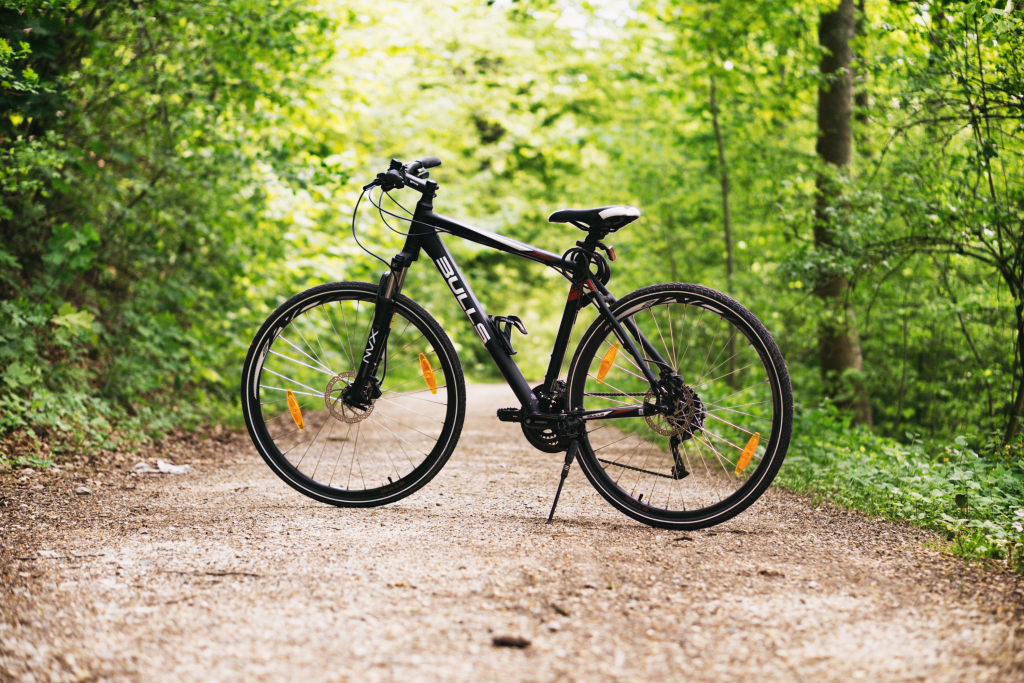
Gear Ratios: The bike leg of a triathlon race typically involves different types of terrain and gradients. Choosing appropriate gear ratios can help maintain a suitable pedaling cadence during uphill and downhill sections. This may require adjustments based on the characteristics of the race course and your personal preference.
Riding Comfort: Long hours of cycling require consideration of comfort. Choose a suitable saddle and handlebar position to reduce discomfort and fatigue. Proper cycling gear such as padded cycling shorts, cycling gloves, and cycling shoes can also provide additional comfort and support.
Safety Equipment: During cycling, make sure to wear a helmet to provide head protection. Additionally, installing front and rear lights and reflective devices can enhance your visibility and improve safety.
Most importantly, choose a bike that you are familiar with and accustomed to, so you can focus on performance rather than adapting to a new riding style. If you are participating in a race for the first time and do not want to spend too much money on purchasing a new bike, you can consider renting a bike or buying a used one. When purchasing a used bike, ensure that it is in good condition and has undergone proper maintenance.
Finally, consider joining training classes and engaging with experienced cyclists who can provide more specific advice on bike selection and riding techniques.
Triathlon tips
Swimming Tips:
– Look for a coach or team to help you learn proper swimming techniques. The swimming portion is often the most challenging for beginners.
– Learn to coordinate your breathing and stroke. Inefficient strokes and difficulty breathing can result in expending more energy during the cycling and running stages.
– Ensure you have goggles that fit you well and provide a good seal. Put on your swim cap first and then the goggles to prevent them from coming off during the race.
– Consider purchasing a wetsuit based on the race rules and water temperature. Make sure to understand the conditions of the race venue and water.
– Choose a triathlon-specific race suit that fits your body well, as it will provide better comfort and performance.
– Practice bilateral breathing to adapt to various conditions and fellow swimmers.
– Aim and maintain the correct course line, practicing lifting your head every few strokes to confirm your direction and continue swimming.
Triathlon how to get faster on the bike:
– Consider your bike type and, if possible, choose a standard road bike as it may provide better performance in the race.
– Use clipless pedals and compatible cycling shoes to enhance pedal efficiency.
– The bike must fit your body. Work with bike experts to ensure proper bike fitting.
– Always wear a helmet, which is a mandatory equipment for triathlon races.
– Practice smooth gear shifting and riding in different gear ratios. Familiarize yourself with road rules and try to use dedicated bike lanes whenever possible.
– Practice skills such as stopping, starting, turning, decelerating, shifting gears, and drinking. Riding with others can improve safety and motivation.
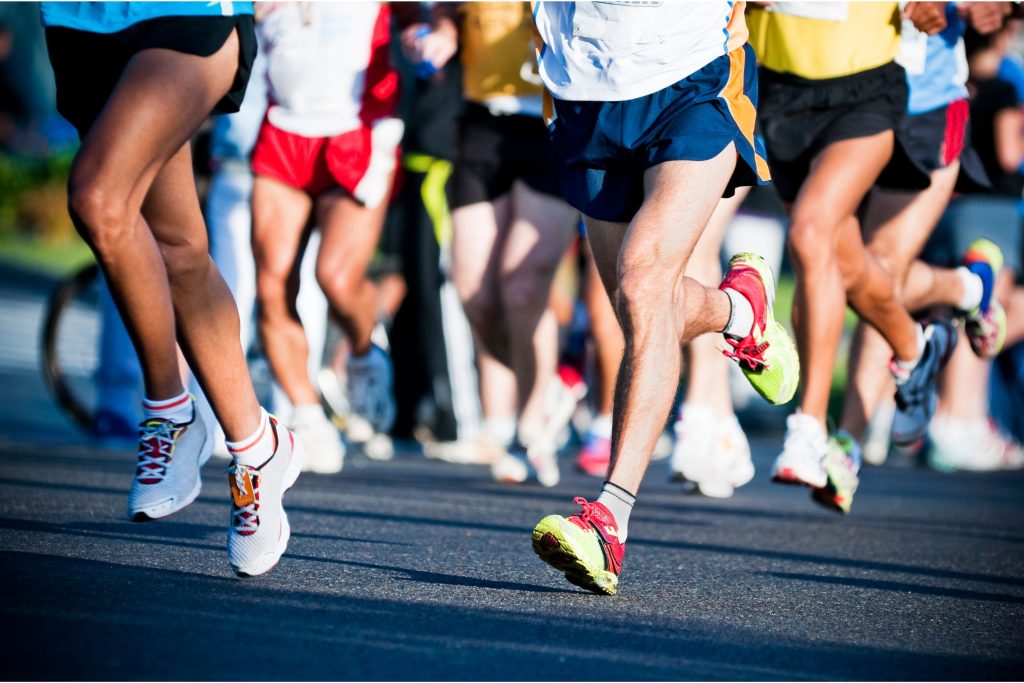
Running Tips:
– Use comfortable running attire and high-quality running shoes.
– Maintain the correct stride and rhythm. Keep your body slightly tilted forward, relax your hands, swing your arms, and lift your feet for quick forward motion.
– Include speed training and long-distance runs in your running training. Incorporate a run immediately after cycling to adapt to the state of fatigue.
– Conduct speed workouts such as interval training, fartlek training, and hill repeats to improve your endurance and speed.
– Practice running on different terrains, including uphill, downhill, and uneven surfaces, to adapt to various race environments.
Additionally, proper nutrition and adequate rest are crucial parts of triathlon training. Ensure your diet plan includes an adequate amount of carbohydrates, protein, and fats to support your training and recovery. Don’t overlook the importance of rest and recovery, giving your body enough time to adapt and repair from the training stress.
Are triathlons healthy?
Here are some points highlighting the advantages of Ironman triathlon for overall health:
Comprehensive workout: Ironman triathlon involves swimming, cycling, and running, which effectively exercise muscles throughout the entire body. Swimming strengthens the upper body and core muscles, cycling works on the quadriceps, hamstrings, calves, and glutes, while running enhances bone density and leg muscles. This comprehensive workout improves overall strength and endurance.

Cardiovascular health: Ironman triathlon is a combination of high-intensity aerobic exercises that greatly benefit cardiovascular health. Long-term participation in Ironman training enhances heart function and reduces the risk of cardiovascular diseases. The combined exercise of swimming, cycling, and running improves the efficiency of the cardiovascular system, promotes blood circulation, and enhances oxygen delivery.
Weight management: Ironman triathlon involves high-intensity aerobic exercises that effectively burn calories and facilitate fat burning. Continuous high-intensity training increases the basal metabolic rate and continues calorie burning even after the workout. This is beneficial for weight management and achieving weight loss goals.
Mental well-being: Ironman triathlon also has positive effects on mental health. Exercise promotes the release of endorphins, such as serotonin, dopamine, and acetylcholine, which contribute to improved mood, reduced depression, and anxiety relief. Participating in Ironman triathlon training can also improve focus, cognitive function, and help alleviate stress.
Social interaction and teamwork: Ironman triathlon events are often social and team-oriented. Engaging in Ironman triathlon training and competitions allows individuals to meet new people and share experiences and achievements with others who share the same passion for the sport. This social interaction and teamwork foster social connections, enhance personal happiness, and improve overall quality of life.
In conclusion, Ironman triathlon offers various health benefits. It provides a comprehensive physical workout, improves cardiovascular health, aids in weight management, promotes mental well-being, and offers social interaction and teamwork opportunities. Whether you are a beginner or an experienced athlete, participating in Ironman triathlon training can have a positive impact on your overall health.

